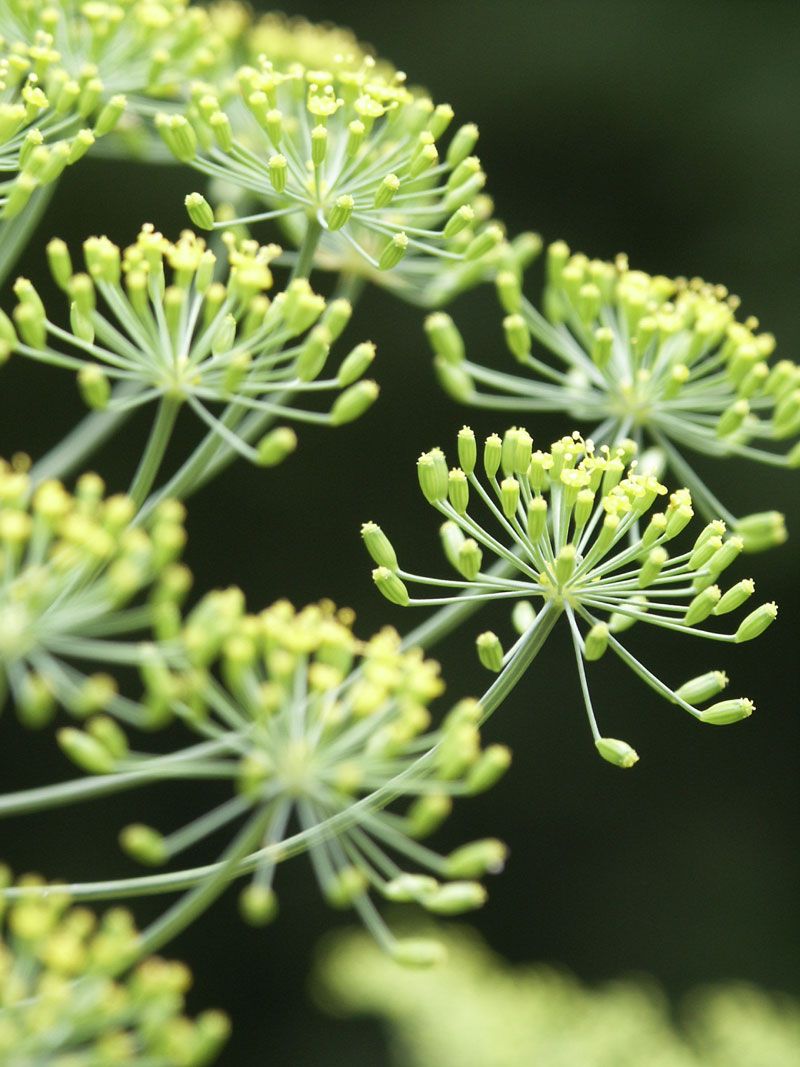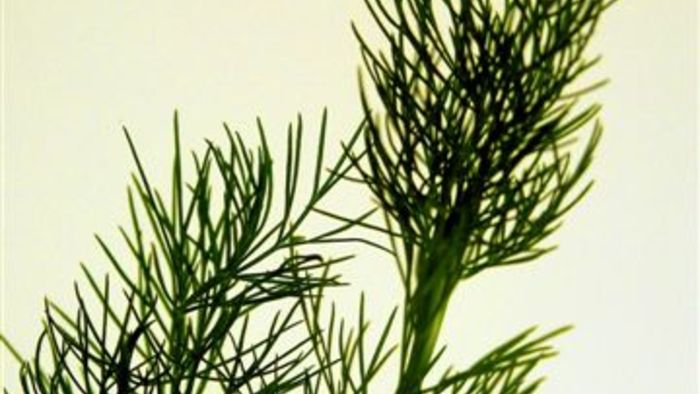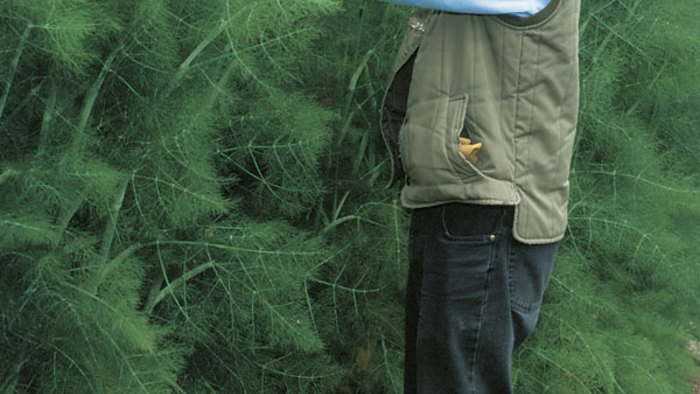
Dill grows in most climates with the modest requirements of fairly friable soil, light fertilization, and sun. It will not grow successfully indoors, as it needs 12 to 18-inches of taproot space and much branching room. While it flourishes in the garden and will conveniently reseed itself with good plants coming in for many years, it languishes in confined areas.
From the garden to the kitchen
| Lullaby dill, the baby calms to sleep; Fragrant dill, the cook bakes bread; Fruitful dill, the gardener goes to reap. from Herbs in the Kitchen, by Carolyn Dille and Susan Belsinger |
|
Dill (Anethum graveolens) germinates and grows quickly and may be planted after danger of frost, or all year round in suitable climates. The seeds and leaves are harvested at different times. If you want fresh dill weed into the late fall, sow again in midsummer. Cut the leaves close to the stem about two months after planting. To harvest the seeds, allow the umbels to form on some plants and the seeds to turn pale brown. Cut the tops with about a foot of stalk and hang upside down with the umbels in paper bags to catch the seeds. Be sure they are completely dry before storing. Dill may be grown near vegetables for leaf harvesting, but should not be allowed to mature, especially near carrots, as it effectively slows their growth.
Dill (the seeds, leaves, or both) is found in baked goods of all descriptions, including breads, crackers, cookies, cakes, and pies. It is very common with fish: the gravlax and marinated herring of Scandinavia; dill sauce for fresh trout in England; and fish grilled with dill in France and Russia. It is used in sauces for poultry and vegetables; with meats, particularly in Russian and Eastern European foods; and as an enlivener of simple egg or potato dishes. When small amounts are used, dill combines successfully with parsley or chervil to poach chicken, fish, and early summer vegetables. The flavor, from dill’s particular camphor compound, is a mixture of anise, parsley, and celery, with a distinctive green bite on the sides of the tongue. The aroma is a clean combination of mint, citrus, and fennel, with a touch of sea air. The seeds’ flavor is predominately a combination of caraway and anise.
Dill’s aroma is fairly delicate and loses much in drying or cooking, so dried dill does not have the bright bouquet that fresh dill has. Fortunately, fresh dill is available during most of the year in major produce areas of the United States. Purchased or harvested dill should have no yellow or pale green color in the leaves or stems.
Next week I’ll talk more about how to grow dill—and then post some recipes.




















Comments
Log in or create an account to post a comment.
Sign up Log in